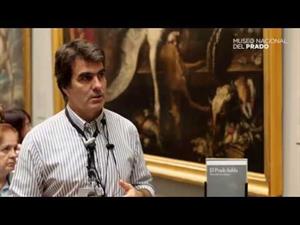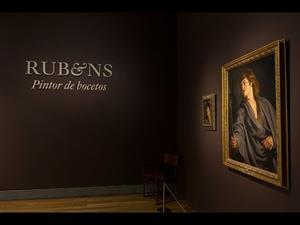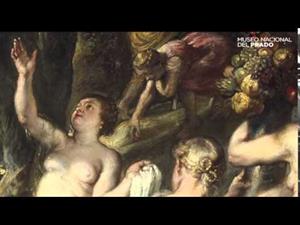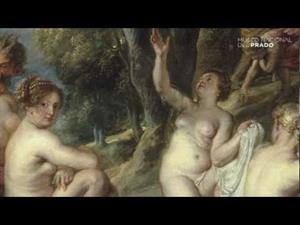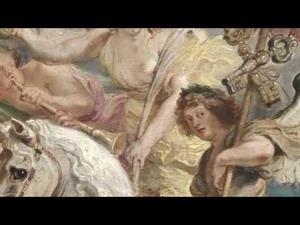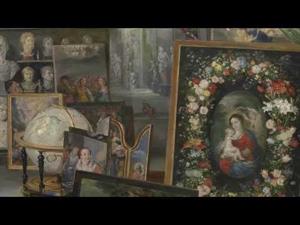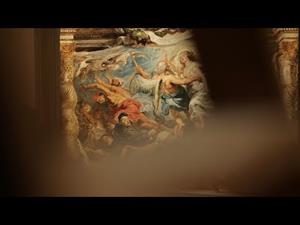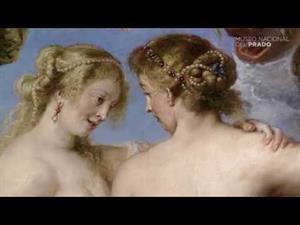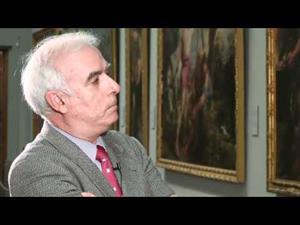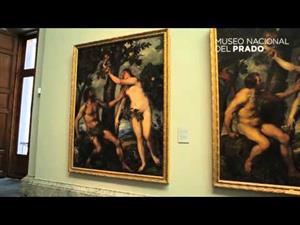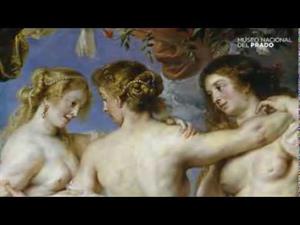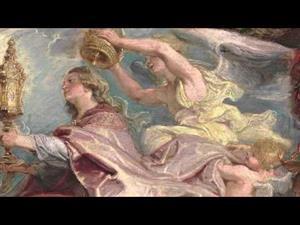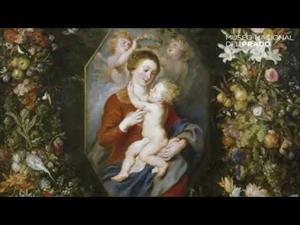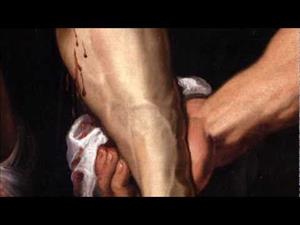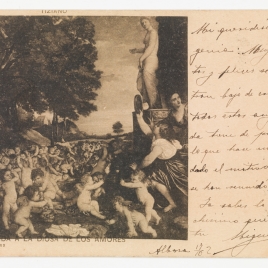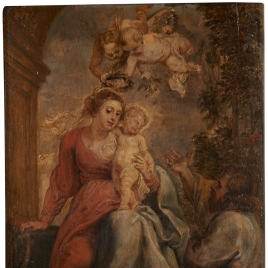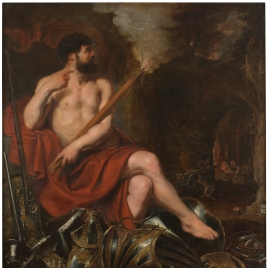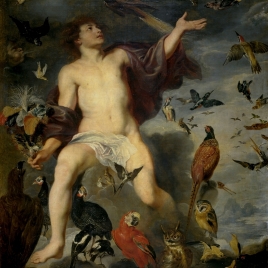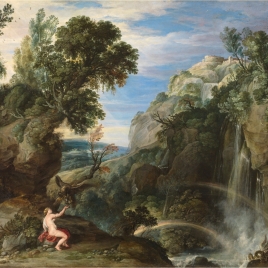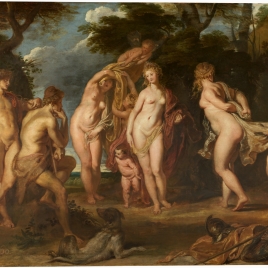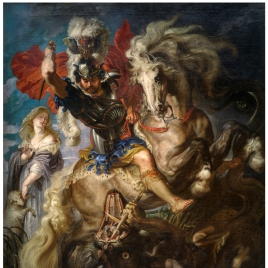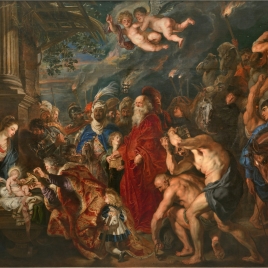The Garden of Love
1630 - 1635. Oil on canvas.Room 029
We are confronted here with one of Rubens’s greatest gifts as a painter: his ability to create images of a joyful way of being in the world related to love and inspired by ancient literature and Renaissance art. In the case of the latter, this means primarily Titian. This painting is especially close in mood to the Bacchanal of the Andrians and the Worship of Venus. Many features of this scene call to mind Titian’s paintings: the coexistence of mythic and real-life characters, the presiding statue of Venus, the flying children, the natural setting and its rich colouring, the sensuous atmosphere and sexual insinuation, the presence of music, the relative size of the figures within the composition. Rubens knew Titian’s works, most likely through copies (they had not yet arrived in Spain when he last visited in 1628-29), and painted two versions of them around the time when he made the Garden of Love. In this painting we see that Rubens has fully assimilated the influence of the Venetian master.
In his art, Rubens associated the symbolic ideal of a plentiful natural setting with different situations, from ancient and Christian myths to ideas of fruitful government in his homeland, the Spanish Netherlands. Here he has brought it close to his personal life. Against the background of a wooded area and sky painted in gorgeous hues there is a terrace enclosed by a portico. This is built in the late-sixteenth-century Italian style Rubens wrote about in his book Palazzi di Genova of 1622, and which he had used in the design of his own palatial home in Antwerp. In the garden is also a shallow grotto with a statue of a Venus, the goddess of love who presides over the entire scene. One of the women in the gathering, dressed in blue, bears a striking resemblance to Helena Fourment, Rubens’s wife at the time. If we look at the portrait of Helena by Rubens in the Alte Pinakothek in Munich, the resemblance, to my eye, is indisputable. A different matter is whether this implies a personal identification by Rubens with the story depicted, or simply the use of a female type inspired by his wife.
As always with the highly educated Rubens, the iconographical details are rich with allusions that add meaning to the painting. The peacock next to Venus, for example, has been interpreted as a reference to Juno and one of her attributes, motherhood. Rubens may have wished to add this nuance to the concept of love. Inside the portico is a statue of the three graces, frequent companions of Venus. The other mythological figures in the scene are the winged boys represented in the flesh instead of stone, thus bringing the mythical world that we witness to life. Rubens enjoyed painting this type of figures and liked to add variety to them by depicting some with bird wings, others with insect wings, a distinction he had seen in ancient art. Some of these children can be identified with Cupid because they carry bows and arrows. One of them holds a red ribbon attached to two doves, a coupling of the concepts of love (doves were associated with Venus) and union. The flying child in the centre carries a torch and a crown made of flowers, attributes that identify him with Hymen, god of marriage (Rubens painted the same god with the same attributes, but older, in one of the paintings from the Medici cycle). A seated woman dressed in green looks up at him. Is Rubens trying here to highlight this deity? The fact that the head of the woman gazing upwards occupies the exact centre of the composition may support this idea.
The matronly Venus implies that love pervades the scene. The winged children bring still more love, some of it of a kind specifically associated with matrimony, as we have seen. The crowd gathered dresses in clothes contemporary with the time when the painting was made - the shimmering coloured cloth and the folds are a beautiful feature of this image. The group in the background, under the portico, reminds me of the painting Dance of Mythological Figures. One of the men touches the breast of a woman while protecting another from a water sprout with his hat. (In a print by Christoffel Jegher made not long after the painting, the hand that touches the breast has been moved down slightly. Rubens was less concerned with modesty than many of his contemporaries).
Most of the figures in the foreground share a more serious state of mind. A man in a posture oddly reminiscent of Rembrandt plays a lute. Next to him is the seated woman dressed in green, who appears to sing, and a child who holds a music book. A woman in the foreground asks the figure dressed in blue to sit with her, or maybe she is telling her to touch Cupid.
The idea of love that we see here relates to Rubens’s personal life. He had widowed in 1626 and married Helene at the end of 1630, when she was sixteen and he fifty-three. From that time on he lived in a state of infatuation.
Vergara, Alejandro, 'Comentario '. En: Pasiones mitológicas, Madrid, Museo Nacional del Prado, 2021, p.106-110 nº9



